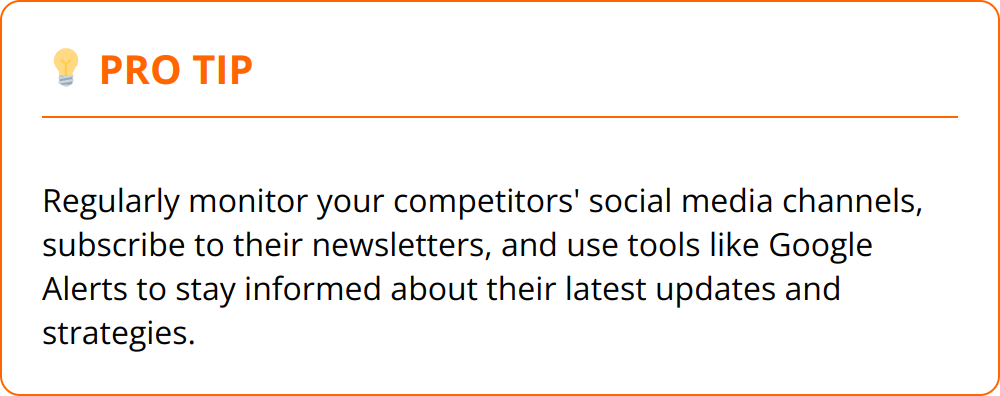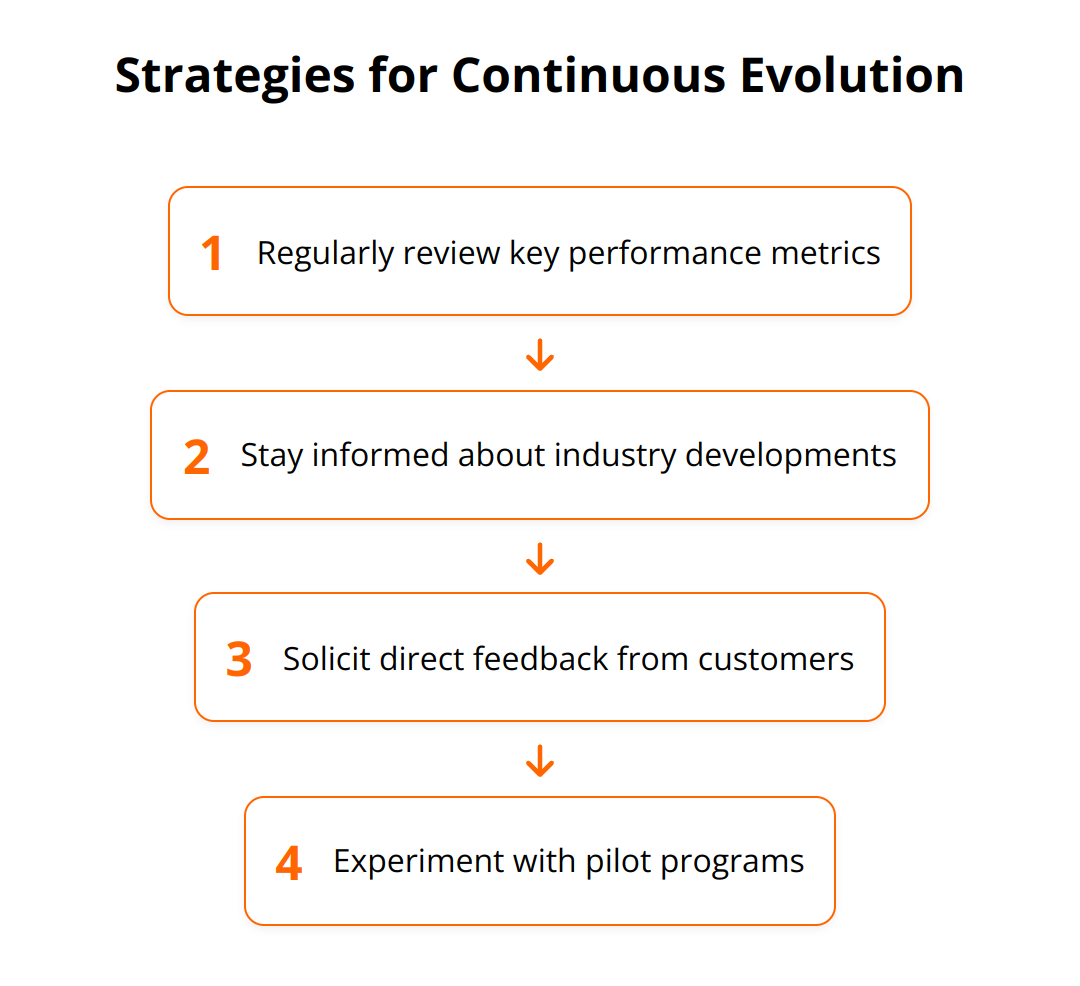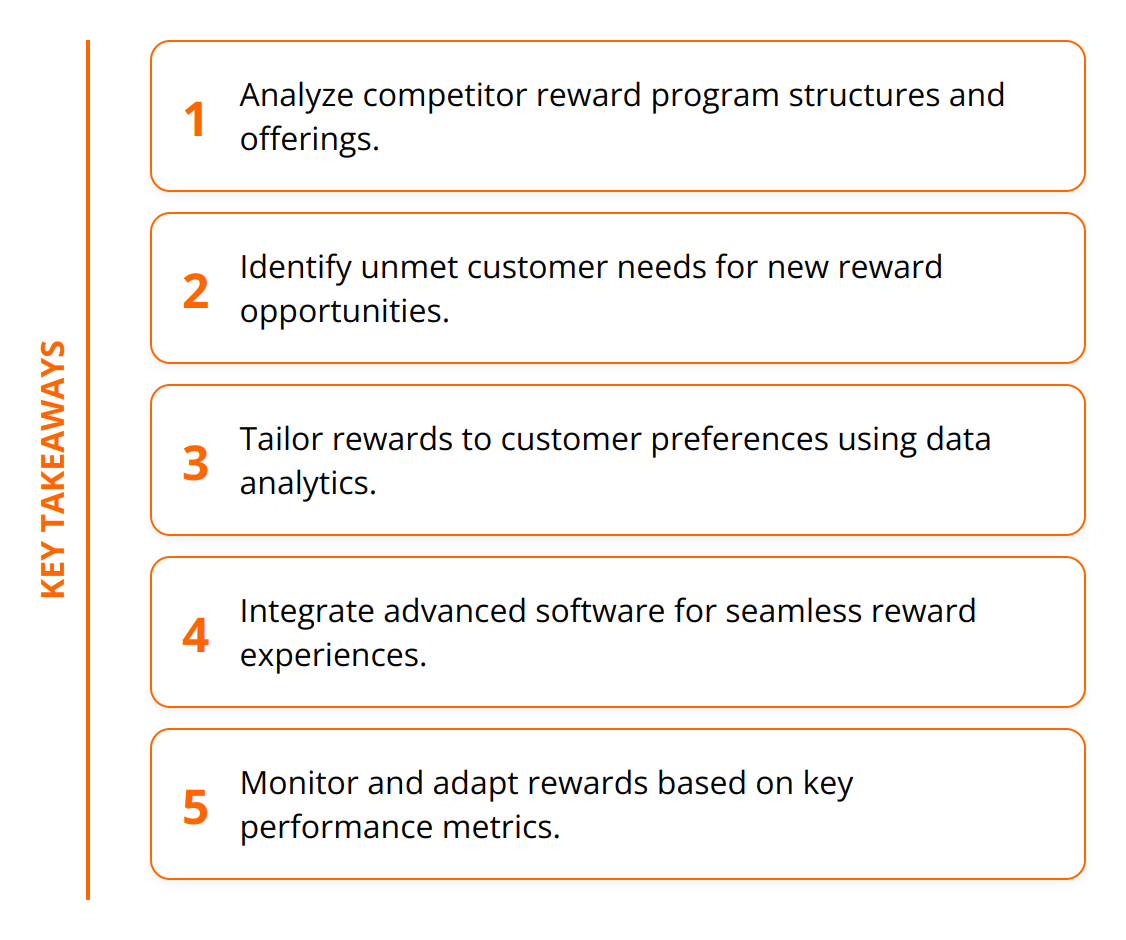
We at Reward the World understand the dynamic nature of the rewards program landscape. A well-conducted competitive analysis is the cornerstone of a successful rewards strategy. It’s about understanding what others offer and finding opportunities to stand out. This guide: Competitive Analysis for Rewards: Essential Guide is designed to walk you through the essential steps to analyze, leverage, and enhance your rewards program based on competitive insights.
Navigating Reward Program Competition
In today’s marketplace, brands utilize a variety of reward programs to engage and retain customers. Understanding this landscape is not just an advantage; it’s a necessity for any business looking to optimize its rewards strategy. Here are insights and actionable tips on conducting a competitive analysis that positions your reward program for success.
The Wide Spectrum of Reward Programs
Reward programs come in many shapes and forms, from points-based systems and tiered loyalty schemes to instant gratification rewards and exclusive member benefits. Each type caters to different customer behaviors and preferences. For instance, points-based programs are excellent for encouraging repeat purchases, while tiered systems can foster a sense of achievement and exclusivity, encouraging even higher levels of engagement.
Why Competitive Analysis Matters
Competitive analysis goes beyond knowing your rivals’ moves. It’s about identifying gaps in the market, understanding customer preferences deeply, and pinpointing what truly makes your program unique. In essence, it’s about finding that sweet spot where your offerings resonate perfectly with your audience’s desires and needs, something your competitors might have overlooked.

Key Metrics to Focus On
To truly gauge the effectiveness of your competition’s reward programs—and by extension, your own—consider these key metrics:
- Customer Enrollment Rate: Signals how appealing the reward program is at drawing new members.
- Active Engagement Rate: Shows the percentage of members actively participating, highlighting the program’s ability to maintain interest.
- Redemption Rate: Reflects the value customers see in the rewards, indicating how often they redeem their points or benefits.
- Customer Lifetime Value (CLV): This metric helps you understand the long-term value of loyalty program members compared to average customers.
- Churn Rate: The rate at which customers disengage can reveal weaknesses in a program or areas where competitors are outperforming you.
By monitoring these metrics, you can benchmark your program against competitors and identify areas for improvement. For instance, a low redemption rate might suggest that your rewards are not appealing or accessible enough, prompting a strategy shift.
Furthermore, employing personalized strategies and effective communication plays a critical role. Tailoring rewards to individual customer preferences and clearly communicating the benefits and terms can significantly enhance engagement. For actionable insights on implementing such strategies, consider exploring resources like personalized rewards strategies and incentive program analytics.
In summary, understanding the competitive landscape of reward programs involves a deep dive into what types of programs exist, how they stack up against each other, and what metrics offer the most revealing insights into their performance. Armed with this knowledge, businesses can craft strategies that not only compete more effectively but also elevate their brand in the hearts and minds of their customers.
Effective Competitive Analysis Strategies
Conducting a thorough competitive analysis is essential for understanding how your reward program stacks up against the competition and where there might be opportunities to innovate or improve. This analysis involves several key strategies that can provide actionable insights to steer your program towards greater success.
Gathering Competitor Information
The first step in a competitive analysis is collecting detailed information about your competitors’ reward programs. Utilize online tools and software designed for market research and competitor analysis. Services like SEMrush or Ahrefs can offer insights into competitors’ online visibility and customer engagement strategies, while Google Alerts keeps you updated on their latest moves.
Regularly visiting competitors’ websites, subscribing to their newsletters, and monitoring their social media channels are straightforward yet effective ways to gather pertinent information. This practice helps in understanding their reward structure, the frequency of their promotions, and how they communicate with their audience.

Analyzing Reward Structures and Offerings
After gathering data, closely analyze how competitors structure their rewards and what they offer. Look for patterns in how rewards are earned and redeemed, types of rewards provided (e.g., discounts, products, experiences), and any unique features or benefits that make a program stand out.
It’s important to identify both the strengths and weaknesses in these programs. For example, a competitor might have a robust points-based system but lacks personalized rewards, an area where you could differentiate your program. Paying attention to reviews and customer feedback on public forums and social media can also reveal what customers appreciate or dislike about these programs.
Identifying Market Gaps and Opportunities
With a solid understanding of the competitive landscape, the next step is to spot gaps and opportunities. This involves looking for unmet needs within the target market that your reward program could fulfill. Perhaps there’s a demand for more experiential rewards or a preference for simplicity and ease of use that competitors are overlooking.
Consider how emerging trends, such as sustainability or digital experiences, could be incorporated into your reward program to appeal to evolving consumer preferences. Drawing inspiration from adjacent industries can also uncover innovative ideas that could be adapted to your program.

This strategic approach to competitive analysis not only illuminates what others in the space are doing but more importantly, identifies how you can enhance or pivot your rewards program to better meet customer expectations and stand out in a crowded market.
To better understand the dynamics of customer engagement and retention through rewards, explore more on Market Research Rewards Best Practices and Customer Retention tactics.
By systematically gathering information, analyzing competitor offerings, and identifying market gaps, you can refine your rewards program to be more competitive and appealing to your target audience. Continuously monitoring the competitive landscape and evolving your program accordingly is key to maintaining relevance and driving long-term loyalty.
Enhancing Rewards with Competitive Insights
Gaining a competitive edge in the rewards program landscape requires leveraging competitive insights to tailor and improve your offerings. This calls for a strategic approach that includes customizing rewards, integrating technology, and adopting continuous improvement practices. Here’s how businesses can achieve these objectives effectively.
Tailoring Rewards to Customer Needs
Customization is key to standing out in the crowded rewards space. It’s imperative to understand that not all customers value rewards in the same way. Some might prefer discounts, while others value exclusive experiences or products. To customize effectively, segment your customer base using data analytics to uncover varying preferences and tailor rewards accordingly. For actionable strategies on customization, viewing resources such as personalized rewards guide can be highly beneficial.
Integrating Seamless Technology
A seamless user experience is non-negotiable. Customers expect interactions with rewards programs to be hassle-free, whether they’re earning points or redeeming rewards. This is where technology plays a crucial role. By integrating advanced software and mobile applications, businesses can ensure that customers interact with their rewards program effortlessly. Employing technologies like real-time tracking and personalized notifications can elevate the customer experience significantly. A prime example of technology integration can be found in the implementation of digital solutions in rewards, which showcases the value of keeping user experience at the forefront.
Strategies for Continuous Evolution
The competitive landscape of rewards programs is ever-evolving, and staying ahead requires continuous monitoring and adaptation. Here are some practical tips for businesses looking to keep their programs competitive:
- Regularly review key performance metrics to identify trends and areas for improvement.
- Stay informed about industry developments and emerging customer preferences through market research.
- Solicit direct feedback from your customers through surveys, social media, and community forums.
- Experiment with pilot programs to test new ideas before a full rollout.

Adopting these practices will not only help in refining your rewards program but also ensure it remains relevant and appealing to your target audience.
In conclusion, leveraging competitive insights to enhance your rewards program is a dynamic process. It involves understanding customer needs deeply, harnessing technology for a better experience, and being committed to continuous improvement. By focusing on these areas, businesses can develop a rewards program that not only competes effectively but also builds lasting loyalty among its customer base.
The next chapter will delve into strategies for maintaining and increasing customer engagement through your enhanced rewards program, ensuring long-term success and loyalty.
Final Thoughts
Engaging in a detailed competitive analysis is a transformative action for any rewards program. It unpacks the intricacies of the market landscape, showcasing where your offerings can shine brightest. The journey from understanding the broad spectrum of rewards programs to leveraging competitive insights for enhancement is critical. It’s clear that the agility to adapt and innovate based on these insights sets the foundation for a successful strategy.

Key takeaways emphasize the necessity of closely monitoring competitive dynamics and customer preferences. They also underscore the importance of harnessing technology to streamline and elevate the user experience. Through continuous evaluation and adaptation, programs can remain appealing and relevant, ensuring long-term customer loyalty.
The continuous journey of assessment and innovation is pivotal. It’s not enough to launch a rewards program based on current competitive analyses; the market evolves, and what works today might not tomorrow. Proactive strategy improvement, guided by ongoing data collection and customer feedback, is vital.
We at Reward the World believe in the power of proactive adaptation and cutting-edge technology to keep rewards programs ahead. With our global incentives platform, businesses have the tools they need to deliver instant, appealing rewards that speak directly to diverse customer needs. Explore how our platform can transform your rewards strategy by visiting Reward the World.
In closing, the essence of a competitive rewards program lies not just in its initial appeal but in its ability to grow, adapt, and continually excite its audience. The commitment to constant evaluation and the courage to innovate are what will truly differentiate your program in the crowded marketplace. Let’s move forward with the confidence to adapt, innovate, and lead in the world of rewards with this Competitive Analysis for Rewards: Essential Guide.
